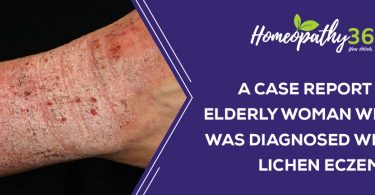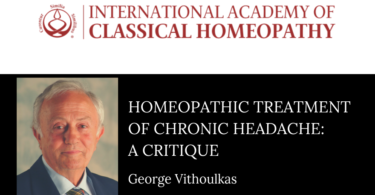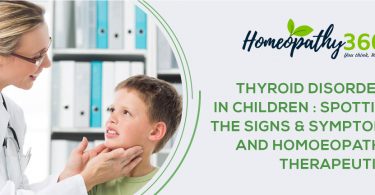SCIENTIFIC STUDY OF CHAMOMILLA & ARTEIMASIA ABROTANUM OF COMPOSITAE FAMILY BASED ON THEIR ACTIVE CONSTITUENTS IN CASE OF PAEDRIATIC DISORDER.
Introduction:
Study of Materia Medica and its application on disorders vary from person to person. To understand nature of each remedy starting from drug proving, most of us will have confusion. In this article I made an attempt to make to understand by comparative study of Chamomile and Abrotinum based on their Phytochemical activities with their sphere of action in pediatric disorders.
Each phytochemicals got peculiar properties which resembles sign and symptoms of remedy.
Chamomile is a natural source of blue oil. The flowers and flower heads are the main organs of the production of essential oil. It is remarkable that chamomile flower oil mainly consists of sesquiterpene derivatives (75–90%) but only traces of monoterpenes. The oil contains up to 20% polynes. The principal components of the essential oil extracted from the flowers are (E)-β-farnesene (4.9–8.1%), terpene alcohol (farnesol), chamazulene (2.3–10.9%), α-bisabolol (4.8–11.3%), and α-bisabolol oxides A (25.5–28.7%) and α-bisabolol oxides B (12.2–30.9%), which are known for their antiinflammatory, antiseptic, antiplogistic, and spasmolytic.
Bisabolol has been found to reduce the amount of proteolytic enzyme pepsin secreted by the stomach without any change occurring in the amount of stomach acid, due to which it has been recommended for the treatment of gastric and upper intestinal diseases
More than 120 chemical constituents have been identified in chamomile flower as secondary metabolites, including 28 terpenoids, 36 flavonoids and 52 additional compounds with potential pharmacological activity Components, such as α-bisabolol and cyclic ethers are antimicrobial, umbelliferone is fungistatic, whereas chamazulene and α-bisabolol are antiseptic. The chamomile was found to have the most effective antileishmanial activity.
CONCLUSIONS
There is a great demand for chamomile in the world market because of its extensive medicinal values and impeccable pharmacological properties. Also, there has been an increase in the use of natural substances instead of synthetic chemicals because many herbal medicines are free from side effects, easy to obtain, considered healthy.
| SL.NO | CONSTITUENTS OF CHAMOMILLA | PROPERTIES | CONSTITUENTS OF ARTIMESIA ABROTINUM | PROPERTIES |
| 1 | One of the active ingredients of its essential oil is the terpene bisabolol Other active ingredients include farnesene, chamazulene, flavonoids (including apigenin, quercetin, patuletin and luteolin) and coumarin. | Antispasmodic, anxiolytic, anti-inflammatory and some anti mutagenic and cholesterol-lowering effects for chamomile. Eleven bioactive phenolic compounds), chlorogenic acid and caffeic acid Chamomile extract. Antimicrobial and antioxidant antiplatelet activity, as well as preliminary results against cancer. | Antibacterial activity their Antifungal activity Antimicrobial activity antiseptic, astringent Anti inflammatory, vermifuge and spasmolytic Immunomodulating, anthelmintic, antipyretic | The ethanolic extracts of Artemisia abrotanum and Artemisia pallens were screened for their antibacterial activity against gram positive organisms such as Bacillus subtilis, Bacillus stearothermophilus Micrococcus luteusand gram negative organisms such as Klebsiella pneumonia Pseudomonas cepacia and Salmonella typhi. These extracts were also assessed for their antifungal activity againstCandida albicans Saccharomyces cerevisiaeTrichosporonbeigelii.The antimicrobial activity of ethanolic extracts of Artemisia abrotanum and Artemisia pallens |
| 2 | Essential oil | chamomile was shown to be a potential antiviral agent against herpes simplex virus type 2 (HSV-2) | Considered as antiseptic, astringent, emmenagogue, expectorant, febrifuge, stomachic, stimulant, tonic, anti inflammatory, vermifuge and spasmolytic. It is used for treating upper respiratory tract diseases | |
| Infant botulismin very young children. | Treatment of diabetes mellitus, wound healing, immune modulatinganthelmintic, antipyretic and wound healing | |||
| potent antiallergic activity | ||||
| 4 | Bisabolo | l has been found to reduce the amount of proteolytic enzyme pepsin secreted by the stomach without any change occurring in the amount of stomach acid, due to which it has been recommended for the treatment of gastric and upper intestinal diseases | ||
Dr.Vijayendra V Itagi1 ,Dr.Melita Alva2 ,Dr.Apeksha S Bhandri3
Dr.Vijayendra V Itagi
Vice Principal
Prof & Head Department of Materia Medica
Yenepoya Homoeopathic Medical College & Hospital
Naringana-Mangaluru
Phone: 9448632600





